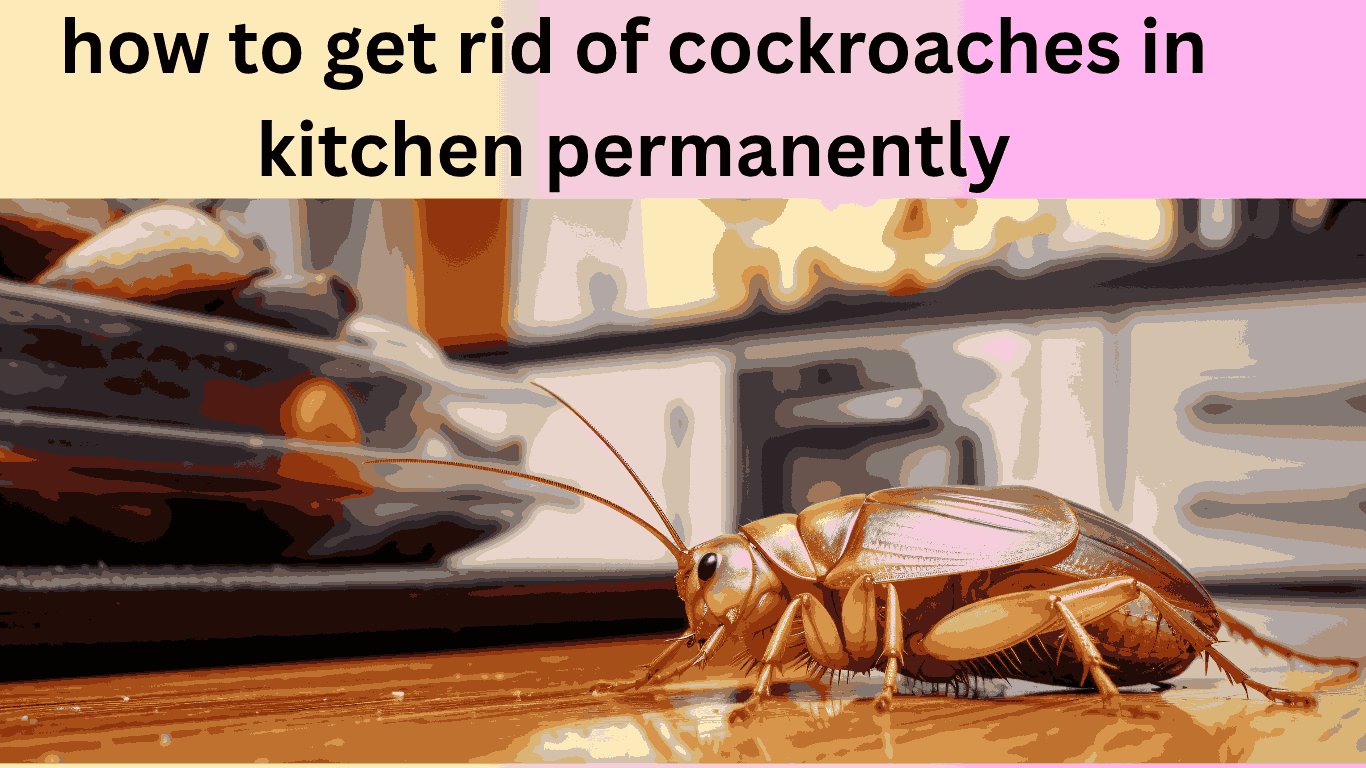Proven Ways to Eliminate Cockroaches from Your Kitchen for Good
Spotting even one cockroach in your kitchen can be unsettling—and for good reason. Cockroaches pose significant hygiene risks and are notoriously difficult to eliminate because of their strong survival instincts and adaptability. If you’re tired of the midnight roach parades and want to take back control of your kitchen, you’re in the right place. In this blog, we’ll explore proven methods—both natural and chemical—that can help you get rid of cockroaches permanently and keep them from ever coming back.
Why Cockroaches Love Your Kitchen
Cockroaches are one of the most resilient and adaptable pests, making them a common household nemesis for many homeowners. Their presence in kitchens – where food preparation and consumption takes place – raises significant health issues as cockroaches carry bacteria that cause illness to digestive systems and allergic reactions in sensitive individuals.
Why Cockroaches Attract Your Kitchen
Omnivorous scavengers such as cockroaches are especially drawn to smelly garbage cans or food left laying around; but they also look out for easy sources of sustenance such as crumbs on countertops and unattended pet food on the floor serve as ideal food sources that attract cockroaches into your kitchen..
Since cockroaches depend on moisture, they tend to hide in damp areas such as beneath sinks and behind picture frames, making regular cleaning essential. Cockroaches may use plumbing pipes as transportation between apartments in an apartment complex.
For your own protection, ensure your home is less inviting for roaches by regularly clearing away crumbs, wiping down counters and shelves, sealing gaps under cabinets where they could hide, placing groceries and food in airtight containers and sweeping or vacuuming regularly – including inside floor cabinets – keeping a drain cleaner such as Drain-O handy to help maintain clear kitchen drains of organic debris.
They may hitch rides on grocery bags, boxes or other items as they pass by or sneak through cracks around windows and doors to gain entry. Cockroaches tend to favor warm and humid environments and are commonly found across all climate zones.
Signs of a Cockroach Infestation
There are various entryways into homes and buildings through which cockroaches enter, such as cracks and crevices, vents, drains, open doors or windows and inadvertently via grocery bags, second-hand furniture or boxes. Once inside they seek warm, dark places where they can hide and feed quickly expanding infestations quickly under ideal conditions such as abundant food and moisture sources.
If you suspect a cockroach infestation in your kitchen or bathroom, check for droppings that resemble ground pepper or small mouse droppings, smear marks (cockroach feces), musty odors from spotting cockroaches in dark areas, along with eggshell casings stuck to hidden surfaces like the undersides of furniture or behind picture frames and wall decorations, can be a strong indicator of an infestation..
Cockroaches can be avoided by sealing entry points, using food storage containers with tight lids, reducing moisture by fixing leaky faucets or eliminating standing water, performing regular pest control services and clearing away compost, woodpiles or trash piles which might provide them with shelter.
Health Risks Associated With Cockroaches
Furthermore, they transmit Toxoplasma gondii parasite which causes toxoplasmosis – potentially life-threatening illness with symptoms like fever, rash, fatigue and lymph node swelling around neck and abdomen – while passively carrying and transporting bacteria causing tuberculosis (TB).
Inhaling cockroach allergens can trigger wheezing, breathing difficulties, and skin rashes—especially in individuals with respiratory conditions. Studies have shown that children who test positive for cockroach allergens on skin-prick tests are more likely to experience severe asthma attacks.
Cockroaches can spread harmful bacteria that cause gastroenteritis, a condition marked by stomach pain, diarrhea, vomiting, and dehydration. In severe cases, these infections can enter the bloodstream and lead to life-threatening sepsis; ingestion can even enter bloodstream causing sepsis infections; an infestation is particularly hazardous to elderly individuals with compromised immune systems – in these instances barrier exclusion measures can prevent infestations by keeping clean surfaces free of debris that attract cockroaches from coming in contact with food preparation surfaces, sinks dishes etc.
To minimize risks preventative measures should be implemented against future outbreaks by regularly performing maintenance practices on these surfaces to eliminate food-contact surfaces contaminated from their presence – an exclusion technique is best practiced against such scenarios by employing barrier exclusion strategies in conjunction with good cleaning practices to ensure this occurrence!
Natural Remedies to Get Rid of Cockroaches
Cockroaches are drawn to food crumbs, spills, dirty surfaces, leaky pipes and clutter-ridden spaces as sources of nourishment, shelter and moisture.
Borax works as a powerful cockroach killer by damaging their exoskeletons and interfering with digestion, ultimately causing them to die from dehydration and internal failure.
Baking Soda and Sugar
Cockroaches love hiding out in garbage disposals, drains and behind picture frames, so using equal parts sugar and baking soda as bait may help lure them out before using food-grade boric acid to kill them. Make sure the bait stays out of reach from children or animals as boric acid may be toxic if swallowed or inhaled.
Peppermint and eucalyptus essential oils are natural and effective cockroach repellents that also leave your home smelling clean and refreshing.
Neem oil and powder contain powerful components to kill cockroaches as well as fleas and ants, but the most effective method for doing this would be mixing it with sugar and flour to form dough-like balls and placing these “dough balls” in places where you have seen signs of activity from these pests.
Diatomaceous Earth
Diatomaceous Earth is an all-natural solution for deterring cockroaches, as well as other common household insects like ants and spiders. It works by adhering to their exoskeletons, absorbing moisture and dehydrating them until death ensues – safe for children, pets and the environment alike! While its application doesn’t produce instant results it takes days before any results emerge and must be reapplied after rainfall.
When consumed by pests, boric acid will dehydrate them until their death occurs.
Garlic
Garlic emits a strong scent that repels and drives away cockroaches, masking other scents that might attract them. You can keep some freshly crushed garlic around or keep some cloves stored in tin containers around your home as an effective and natural cockroach treatment option.
These fine particles break through the cockroach’s protective outer layer, causing rapid dehydration and resulting in death.
Reducing access to food and water for cockroaches is one of the key components in getting rid of them. Avoid placing food scraps in open or overflowing garbage cans, sweep regularly around kitchen counters after cooking and wipe down surfaces after cleaning as part of regular routine. Also be sure to quickly fix leaks around sinks as soon as they occur, clean up any puddles that form and correct any other problems quickly.
Lemon Juice
Cockroaches are an unpleasant home pest, which quickly become an infestation when left alone. Although people try various home remedies to eliminate cockroaches, often these remedies prove ineffective or make matters worse.
Lemon juice and peels contain natural cockroach repellents known as limonene that acts as a deterrent against cockroaches; however, due to its quick evaporation rate it cannot provide long-term deterrence.
Peppermint oil and eucalyptus oil are both safe, natural cockroach repellents that may help deter their presence, such as sprays or pouring directly on to them to kill pests. Both are pet-safe; however, food preparation surfaces or areas where children or pets could potentially come in contact should never be treated with them as these may harm both parties involved.
Maintaining a clean kitchen is one of the best ways to avoid cockroach invasion. Make sure food crumbs don’t accumulate on countertops and dishware gets washed frequently; remove standing water as cockroaches need it for survival; seal cracks and crevices in order to block their entry; using anti-cockroach products like Neem leaves and Neem oil may also aid.
Bay Leaves
Although bay leaves are widely used in cooking, few realize their effectiveness as an effective cockroach repellent. Their strong fragrance makes cockroaches dislike entering homes; thus deterring their entry. Furthermore, these leaves are easy and inexpensive to use – you can place them anywhere that cockroaches frequent such as cupboards, drawers or behind appliances.
If you decide to try the natural method, we advise using fresh bay leaves. They have a stronger fragrance and work more effectively than dried ones; plus, their leaves don’t crumble so cleaning will be simpler. Also keep replacing frequently as their fragrance depletes quickly.
While this method is an easy and gentle way to deter cockroaches, it should form part of an integrated pest control strategy which includes other methods and preventative measures. For instance, regularly clean your kitchen after preparing food, sweep the floor regularly and wipe cabinets, pantry spaces and countertops in addition to sealing any gaps and cracks within your home.
Effective Homemade Cockroach Repellents
Writing effective blog posts that answer reader queries, improve general readability and showcase research can be the key to increasing traffic and conversions. That is why we provide our comprehensive content marketing services so your blogs are at their most efficient.
There are various natural cockroach repellents you can use around the home to either prevent an infestation, or keep existing pests at bay in certain parts of your house where they are already present. Neem oil, mint oil, garlic and catnip are some effective homemade options available for this task.
Diatomaceous earth, made of fine powder made of fossilized algae, is another highly effective cockroach killer. Used as a mechanical insecticide to dehydrate and kill cockroaches, food-grade diatomaceous earth should be applied where you have seen signs of them as well as in areas behind appliances and along baseboards; just remember it can be quite dusty; always wear a mask when using diatomaceous earth!
Rosemary oil has also proven itself as an effective cockroach killer in high enough concentrations. Mix equal parts baking soda and sugar together as bait for your cockroach infestation, then place small dishes of this mixture near baseboards and sinks where cockroaches have been seen lingering – remembering to inspect and renew regularly!
What Works and What Doesn’t for Cockroaches?
Homeowners usually react when they discover cockroaches by seeking “home remedies.” And like with any problem, some remedies might work better than others.
The limonene in citrus fruit repels and kills them, but you would need to apply large volumes of liquid. Once used, however, you will have to wash off all lemon residue from furniture and floors after each application.
Although this will work, this process is messy; each roach will need to be individually sprayed until eventually all die – plus these creatures usually live in groups, meaning you may have many more to kill!
Make sure any food stored in tight-lid containers with secure seals, and regularly empty your trash bins.
Cockroach baits can also be an effective method for getting rid of cockroaches. These foods laced with slow-acting poison are consumed by cockroaches as scavengers; once eaten they do not immediately die – instead spreading it further through regurgitation or cannibalism.
Best Practices for Keeping Your Kitchen Cockroach-Free
Cockroaches can be more than a bother; they can actually present serious health concerns like asthma and rashes. But you can prevent cockroaches from taking over your kitchen by employing best practices for keeping it clean.
Cleanliness and eliminating food sources that attract cockroaches are key elements to keeping your home pest-free. Food waste on countertops or floors, crumbs in cabinets and overripe fruit are major magnets for them; using airtight containers for food storage as well as regularly sweeping and mopping floors will help eliminate potential sources of infestation in your home.
Another successful method for combatting cockroaches is lining cabinet and drawer spaces with aluminum foil; their texture displeases cockroaches, so they will avoid walking on it. You could also try mixing cedar oil or chips with water and spraying around cabinets and entry points as another deterrent measure.
Finally, seal cracks and crevices around doors and windows where cockroaches could enter through cracks or crevices, and plug any leaky pipes or cabinets as soon as possible to protect against moist environments that draw cockroaches in.
How to Seal Entry Points and Cracks to Avoid Cockroaches
Cockroaches often enter homes through gaps and cracks in foundation, around doors and windows, utility lines or any other entry points that allow access. Sealing these entryways can help prevent them from invading.
Examine areas around your home for visible signs of cockroach activity, such as droppings that resemble coffee grounds and their distinct wide, flat body structure that allows them to fit through tight spaces easily. Check dark cabinets and closets, behind appliances, under sinks and along baseboards where there could be any visible cockroach activity as soon as possible as these pests thrive in these dark and warm conditions.
Clean and declutter regularly: Food debris, spills, and clutter create attractive hiding spaces for cockroaches. Wipe surfaces and sweep floors regularly for debris that attract cockroaches; store food in airtight containers when possible and regularly carry out trash to minimize attractants. Also ensure moisture sources such as leaky faucets are repaired as soon as possible and use dehumidifiers in basements and laundry rooms to reduce humidity levels that support their survival.
Caulk or weather stripping applied over these areas can effectively stop cockroaches from entering your home; installing adjustable thresholds at the bottom of doors may help block off these entryways; additionally installing fine mesh screens can prevent them from coming in through vents and openings.
Foods That Attract Roaches And How to Store Them Properly
Cockroaches love grease-laden foods such as pizza boxes, oily splatter from frying, and the thin film of grease around stove hoods; peanut butter also attracts them due to its high fat content.
Cockroaches find starchy foods such as pasta and rice irresistible, particularly when left exposed or improperly stored in containers. It’s essential to use airtight glass or plastic containers and regularly clean pantry areas in order to ward off these pesky insects from infiltrating your home.
Sweet foods can be an irresistible draw for cockroaches, drawing nighttime foragers to sticky surfaces like soda cans, juice bottles and syrup dispensers.
Spilled beer and other alcoholic beverages are another major draw for cockroaches, who enjoy feasting on the yeast and sugar present in such liquids. To protect these drinks from their potential damage by the bugs overnight, keep them stored tightly sealed containers to reduce exposure.
Overripe fruits and vegetables, animal waste in outdoor compost piles, as well as any decaying matter present can all attract roaches in an instant. To minimize odors and attractants for these creatures, all waste should be stored in tightly fitted trash cans with thick garbage bags to minimize odors and attractants; regularly decluttering kitchen and pantry areas can help clear away crumbs that draw in roaches from hidden cracks or crevices.
✅ Conclusion:
Cockroaches may be tough, but with the right strategies, you can win the battle and enjoy a pest-free kitchen for good. By combining cleanliness, natural remedies, sealing entry points, and using effective traps or treatments, you can eliminate these unwelcome guests and prevent future infestations. Consistency is key—stay vigilant, maintain a clean environment, and act at the first sign of trouble. A roach-free kitchen isn’t just possible—it’s completely achievable with the right approach.






